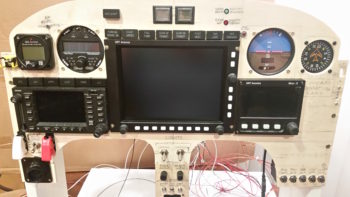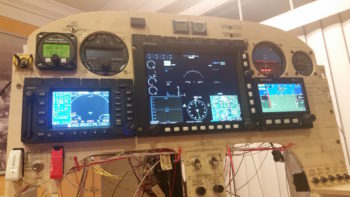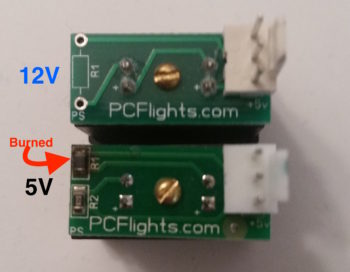After waking up to a good 3″ of snow and a shop temp barely above freezing, I set aside today to really dig into the Garmin GNS480 manuals to really get a decent baseline understanding (and relearn a ton) on how this very powerful unit works. I also rewickered the user’s manual a bit and consolidated their formatted half pages onto full standard pages for about 2/3rds of the unit’s major functions that I was interested in.
After a few hours of studying, I decided to start down the path to resolve an issue I ran into last night. To set the scene, in the 2 pics below you can see a row of annunciator lights just above the Garmin GNS480. Well, last night, right before I headed out the door for my near-weekly dinner and libations with a buddy of mine, as I was getting ready to power down the GPS unit and then the rest of the panel, I noticed that the “GPS” annunciator was inop.
So, the last couple times I’ve turned on my GNS480 I could smell a strong electrical “ozone” type smell, yet nothing was “burning.” Still it was a distinct electrical smell. Quite often I’ll leave the battery charger hooked up to the battery when I’m messing with the EFISs, but lately I was making sure to pull the charge leads off when I fired up the GNS480 …. just in case it wasn’t liking that power connection.
As I mentioned above, last night as I was flipping through different functions to light up the annunciator lights, “SUSP” was a really bright white, “LOC” half the brightness (white) as SUSP, and my green “GPS” annunciator was not lighting up at all when I went into GPS mode. I powered it all down, doing yet another sniff test (I had double checked ALL the power connections before firing up the panel… saw zero issues). I then quickly pulled out the green GPS Korry light. The top corner resistor (opposite the power leads) was fried, visibly burnt up and discolored as you can see below.
So this afternoon I called Stein from Stein Air and asked him if he had installed annunciator lights on the 480 (he had, but it had been well over 10 years ago and he didn’t remember anything about it). I then ran my plan by him to add some resistors to the light circuits… which ironically I was already going to do to dial down the brightness of the LED annunciators. He thought that was the best route and said that’s what he’d do. So, some R&D coming up on stuff I thought I had finalized.
Then, late in the evening, after doing a fair bit of research on LED circuits, etc. I then went to test out a circuit that I found in a discussion that Bob Nuckolls posted on his Aeroelectric Connection forum. It was then that I noticed that the reason why the annunciator light burned out was that it was 5V model versus the 12V version that I had ordered.
To be clear, as you can see in the pic above, both the 5V and 12V PCB boards are marked as 5V. With the vast amount of time spanning between the first order and second batch of lights, I just never noted the difference and assumed the latest order was 12V (plus, I really had no way of knowing except after the fact).
In a big way I’m actually glad this happened because I found out some good stuff on protecting LED lights on the AEC forum . . . especially for high powered circuits. The diode protection circuit is essentially the same as a flyback diode on a relay in that it keeps any initial voltage spikes from backtracking through the LED and frying it.
So, with all that, I have some tests I need to run to get these GNS480 GPS annunciator lights back online. I’ll also email PCFlights and sort out getting the correct voltage lights to use.



